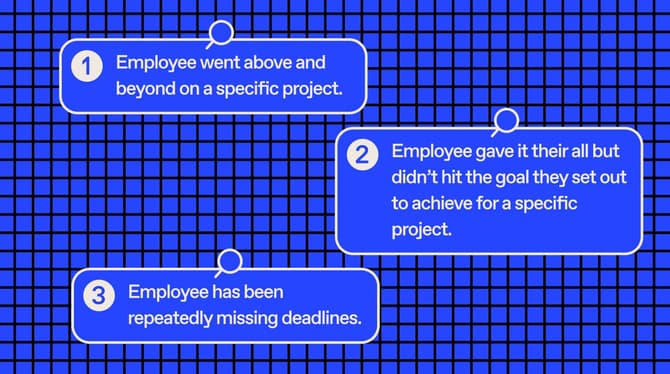We talk to an HBR editor and share insights from our latest employee feedback
A Harvard Business Review Editor, a workplace psychologist, and a remote-working parent walk into a (virtual) room.
Yes, we go to the experts to ask about what’s going on in this new world of remote work, how people are feeling about it, and how to properly manage the new sort of employee burnout that comes with a big life change.
The first thing to remember is that remote work has been on the tip of our tongues for a long time. Our current reality accelerated the process, but we wanted this, or at the very least, we were curious about it. Now that we have been catapulted into a new way of work, it’s important for leaders to take stock of their learnings and to ask employees to do the same — what old notions can we let go of, and what new ones can we embrace? One thing for certain is that there is no better time to be open-minded; there’s a world of possibility on the other end of quarantine.
In this three-part interview series, we also dig into a very interesting bucket of feedback that we’ve been collecting on how employees are coping in their new personal and professional realities. The results will give leaders some helpful insights, and lots to think about when conceptualizing the new future of work.
In this first post, we’ll speak to Dan McGinn, Executive Editor at everyone’s favourite, Harvard Business Review
In this post:
Interview with Dan McGinn on remote work and burnout
Dan McGinn
Executive editor of Havard Business Review &
co-host of Dear HBR podcast.
Dan, can you share your best remote work blooper?
I’ve grown a scraggly, pathetic pandemic beard that has led my boss to call me Grizzly and a Harvard professor to offer to enroll me in the Dollar Shave Club.
In these new and foreign circumstances, what else comes into play when we talk about burnout and remote work, beyond actual work performance?
Working from home erases boundaries between home and work. Work is just a few steps from the kitchen. There’s not much else to do when sheltering in place, so we work more, risking burnout. Also, with the economy tanking, people naturally worry about layoffs and performance, which often leads to more working. It’s kind of a perfect storm for burnout.
It’s kind of a perfect storm for burnout.
Dan McGinn
How can people manage the blurred boundary between work and life?
Stick to a schedule, create a space specifically for work, stay out of it if you’re not working, and try to stay off devices after hours. Easier said than done, of course.
There’s a fine line between high-performance and burnout. In a time when employees have a harder time disconnecting from home, what can leaders do?
It’s certainly something bosses should keep an eye out for, and try to manage by setting reasonable deadlines, encouraging people not to work late nights or weekends unless really necessary, etc. Everyone is different and bosses need to be mindful of that.
But often people who really enjoy their work, or at least certain projects they are working on, are able to put in very long hours without feeling burnout. So I think the threshold people have for this can vary quite a bit from person to person, and maybe even from project to project. Everyone is different and bosses need to be mindful of that, too.
We might say that parents working from home are the most susceptible to burnout right now. As a parent, any first-hand tips?
I am a parent who is working from home, but my children are older (21, 19, 15). Parents of younger children have it much harder, and we should all be empathetic about how hard this has been for them. I also live in the suburbs which means we have more space in our home—and more space to each do our own work—than if we lived in a more dense and urban environment.
What’s been positive about this experience?
I have a really long commute and I already worked remotely about 50% of the time before this happened. I usually find my commute draining, and there were days I did not look forward to going to the office, even if I was enjoying the work, because of the traffic and stress of commuting.
It’s hard to know when we will go back to offices, and all indications are we will be wearing masks when we do, but at least for a time there will certainly be some pleasure in returning to normalcy, seeing colleagues, having lunches, breaking the monotony of working from home. I think everyone will be excited to be back, even if things are different.
What do you think our greatest (or most unexpected) learnings will be from this remote work experiment?
I get the sense many bosses were surprised at how productive people could be working remotely, especially in these circumstances. (People were given no advance warning nor time to prepare; many people had children home from school or lacked the childcare they’d have in more normal times). The most common reaction I’ve heard is “This worked better than we expected,” which is why you are seeing companies like Twitter, Facebook, etc ready to make permanent shifts toward remote work.
When part of the workforce wants to keep working from home and the other half wants to return to the office, how can companies reconcile this?
It’s early to try to sort this one out. As states open up, some companies may be fine with exactly what you suggest: People who want to go back to the office can go back, and people (especially in higher-risk groups) who want to remain remote can do that, at least for a while. Some companies (such as those mentioned above) already seem to be envisioning a permanent shift in which a larger proportion of people can work remotely. I’d expect some companies, for some functions, will insist that people come back to offices once the pandemic is more under control. Over time, if the economy heads back towards normal, people may sort this out themselves: people who want to work remotely will move toward organizations that allow that, and vice versa.
I do see a lot of advantages to an office setting for people starting their careers, and for new hires who are trying to understand the corporate culture. For more experienced people, longer-tenured people (with relationships with colleagues already in place), and people whose jobs are more heads-down, remote may become the norm. Too early to really know for sure.
Here’s what 3,000 employees have to say about remote work
There’s a bag of mixed feelings circulating on the topic. Some are finding it easier to be productive and prefer ditching the commute to work. Others are feeling the burnout of isolation and miss the routine of going to the office. To help get a more detailed understanding, we created a Remote Work Custom Poll for managers to send to their teams.
Data results in this article are from 3000+ users in 350+ companies using Officevibe. The data is anonymized, and for the qualitative analysis, we used our in-house Topic Modeling model to extract the main themes from feedbacks.

Essential insights on remote work from 3000+ respondents:
- The topic of “Remote” work is associated nearly 75% of the time with a positive emotion.
- The topic of “Teams” comes up in about 10% of all feedback. It’s mostly associated with positive emotions such as supportive colleagues. However, people miss collaborating with their team in person.
- More than ⅓ of people surveyed say they have everything they need to work remotely.
- “Flexibility” is the 7th most mentioned topic (out of 200) when we ask employees to elaborate on how they are feeling, and shares mixed sentiments.
PS: You can send the same Remote Work Custom Survey to your team using Officevibe.
While many employees feel set up for success working remotely, there are still things missing. The two most recurring (albeit not shocking) topic responses were:
- “Material” items such as computer monitors, desks, comfortable chairs, etc.
- A “Quiet” space to concentrate on work without interruption
What can companies do about this?
There are certain things that organizations can control, like arranging for office materials to be purchased or delivered, but a quiet space to focus becomes a more difficult issue for leaders to solve, especially when the dilemma is primarily due to working amongst family members.
Focus becomes more challenging for parents who have the added mandate of caring for their children and/or guiding them through virtual schooling. This offsets work-life balance. In fact,
32% of employees do not feel they currently have a proper balance between work-life and personal life.
The same goes for the topic of “Flexibility“. We see a variation of favourable and unfavourable feedback around the subject. On the one hand, survey respondents suggest that they’re happy to not have to commute as it gives them more flexibility around their schedules and more time for themselves in the day. Alternatively, people working at home with families report having a harder time managing a balanced schedule, feeling less flexible, and more overwhelmed all around.
Companies can’t control people’s realities, but they do have control over the culture of empathy they build within their organization, and how they prompt teams to be solution-driven to find inclusive work processes for everyone (we’ll get more into this in our upcoming posts).
On another note, we were positively surprised to see that despite having been thrown into remote work without much warning,
69% of employees using Officevibe strongly agree that they have a clear understanding of what is expected of them.
Clarity is key right now. Without the IRL workplace water cooler chit chat about projects and visual reminders of targets, leaders need to consistently communicate goals and strategy changes. While the stat is generally high, we do still see a handful of feedback from employees vocalizing concerns about “mixed messages” around what to work on. Many companies likely saw a shift in their objectives and made amendments to their strategies. This is where the topic of “Communication” is key.
“Communication” pops up in our feedback and branches off into several sub-topics:
- Company: Employees want to hear from their leaders more. They want more information, clarity of expectations, predicted outcomes. They want transparency.
- Managers: Employees want to communicate more with their managers, and have more detailed updates all around. But, they don’t want to be micromanaged.
- Teams: Employees want better communication procedures between team members while working remotely so they can better collaborate and maintain relationships
It’s not easy for managers to know exactly what to ask or how to communicate during these times. Learn how Officevibe’s one-on-one meeting software helps managers have the right conversations at the right time.
The verdict is in…remote work works.
For industries that could support remote work, things are going pretty well, but it will always be more favourable to some than to others (whether in crisis mode or not). It’s a matter of preference and of course, circumstance.
It will be interesting to see how leaders address the duality of opinion when things return to “normal”. Will the office become obsolete? We see big companies like Twitter, Shopify and Facebook making big claims about going digital for the long haul, but industry leaders like Josh Bersin are questioning if this is all a “fad”. Once the dust settles, many of us might prefer to be back at the office with our peers, soaking in the culture of social interactions, not stuck on day-long Zoom calls.
It will be up to managers to help teams intentionally reflect on what works best for them, and maneuver around the split preferences.
But, “Work from home” and “Everything from home” are not the same…
It’s important to call attention to the fact that “Work From Home,” and “Everything From Home,” are not the same. While remote work might work, the monotony of being home (and for some, home alone) can quickly become emotionally taxing. We’ll explore this new, more emotional burnout in-depth in our next article, but here’s a glimpse into what we’ve surfaced in our data.
Non-work related employee concerns:
- Uncertainty and unpredictability of what the future holds
- Financial and economic stability of their company and the economy
- Loss of focus on work due to personal situations
- Health anxieties for themselves and family
- Information overload
- Isolation and loss of social interaction
The next step is managing and addressing these non-work related variables. This is where it gets personal, and where the concept of “people-first” organizations will need to surrender its buzzword status and truly get to work. We touch on this new burnout in our next article, and offer tips for leaders to manage it within their companies and on their teams.
The best leaders check-in. Officevibe's Pulse Survey tool makes it easy to ask the right questions and take action where it counts. Learn why 50K managers use Officevibe with their teams.




